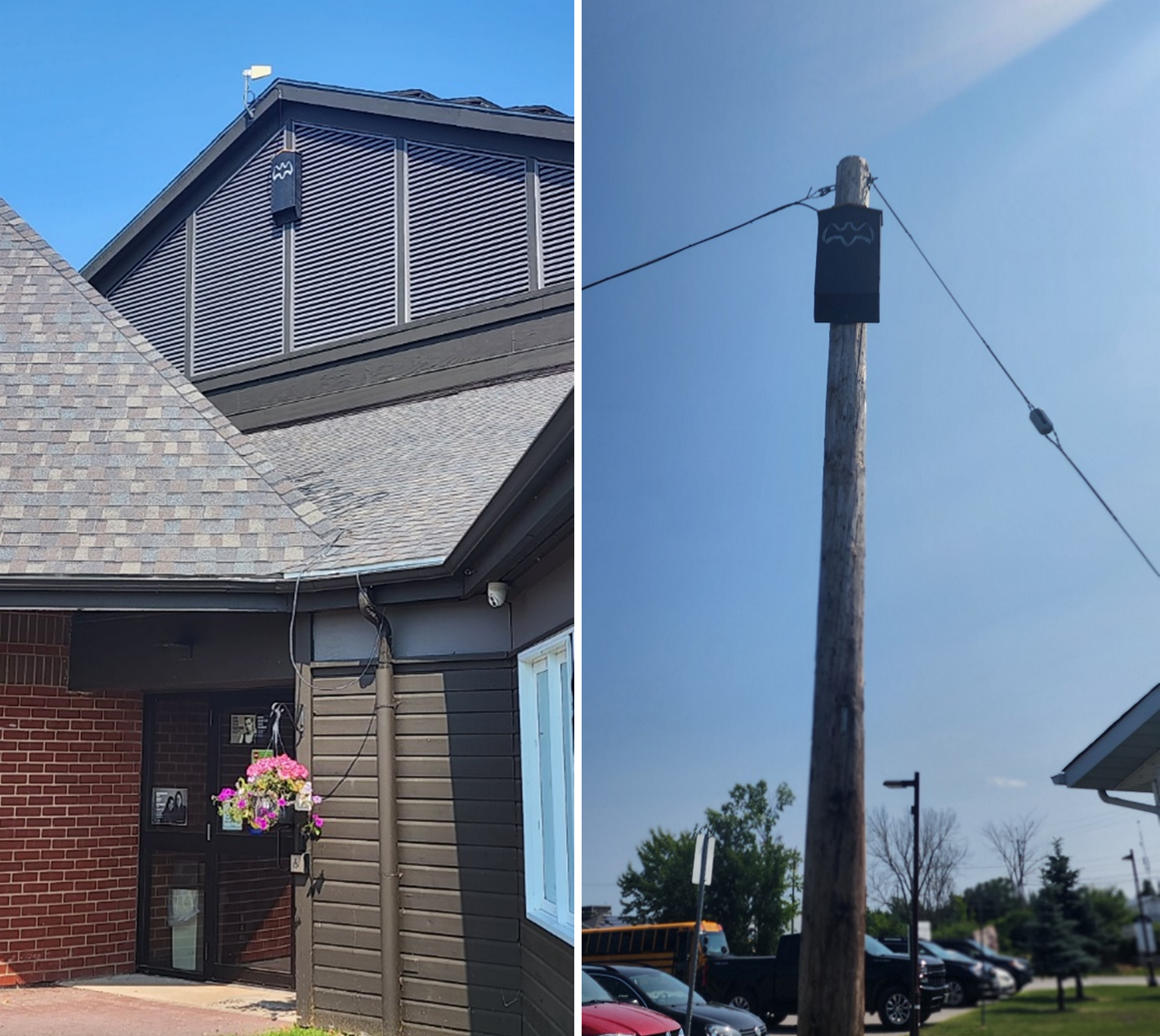In June 2023, a collaborative effort between Nipissing's Environment Department and Public Works culminated in the successful installation of Bat Roosts around the administration building. The primary goal behind these installations was twofold: to protect suitable habitats for bat species and to counterbalance the environmental impacts caused by the recent watermain upgrades in Garden Village.
Within the Nipissing Traditional Territory and Administrative Zones, a diverse range of eight bat species can be found, categorized into two groups: cave bats, which hibernate within their home ranges, and tree bats, which undertake migratory journeys southward to warmer climates during winter.
The following bat species are:
Tree Bats:
- Silver-haired Bat (Lasionycteris noctivagans)
- Hoary Bat (Lasiurus cinereus)
- Eastern Red Bat (Lasiurus borealis)
Cave Bats:
- Big Brown Bat (Eptesicus fuscus)
- Tricolored Bat (Perimyotis subflavus)
- Little Brown Myotis (Myotis lucifugus)
- Northern Long-eared Myotis (Myotis septentrionalis)
- Eastern Small-footed Myotis (Myotis leibii)
Sadly, bats have experienced an alarming population decline from 2006 to 2023, witnessing one of the most drastic reductions ever observed among mammals, with some species experiencing population reductions of over 90%. This distressing decline is attributed to a Eurasian fungus called Pseudogymnoascus, which triggers white-nose syndrome (WNS) in bats. For hibernating bats, WNS proves particularly devastating, disrupting their hibernation patterns and leading to increased energy expenditure, depletion of fat reserves, and, consequently, starvation or exposure to harsh winter conditions.
The ramifications of this fungus extend beyond the well-being of bat populations. Studies have highlighted its impact on ecosystem balance, biodiversity, and even the economy, with increased agricultural pest control efforts becoming necessary.
To combat these challenges, Nipissing's Environment Department is firmly committed to bat species' stewardship and conservation efforts. The department plans to continue monitoring the situation and implementing additional bat houses in the future. A comprehensive technical report on roosting success is scheduled for completion in the fall/winter of 2023.
Those wishing to contribute to local bat population protection can take several actions:
- Refrain from disrupting bats, particularly during hibernation.
- Foster critical roosting habitat by constructing or purchasing bat boxes (http://canadianbathouses.com/).
- Engage in bat monitoring and protection initiatives (reporting bat roosts to the Environment Department and helping in mapping initiatives relating to habitat range).
- Prevent the spread of WNS by disinfecting clothes before entering potential bat hibernation sites (e.g., caves).
- Reduce night lighting (capping lights, using low-wattage bulbs, installing sensors or timers on outdoor lights).
- Through these collective efforts, we can make a positive impact on bat conservation and safeguard these invaluable creatures for future generations.


